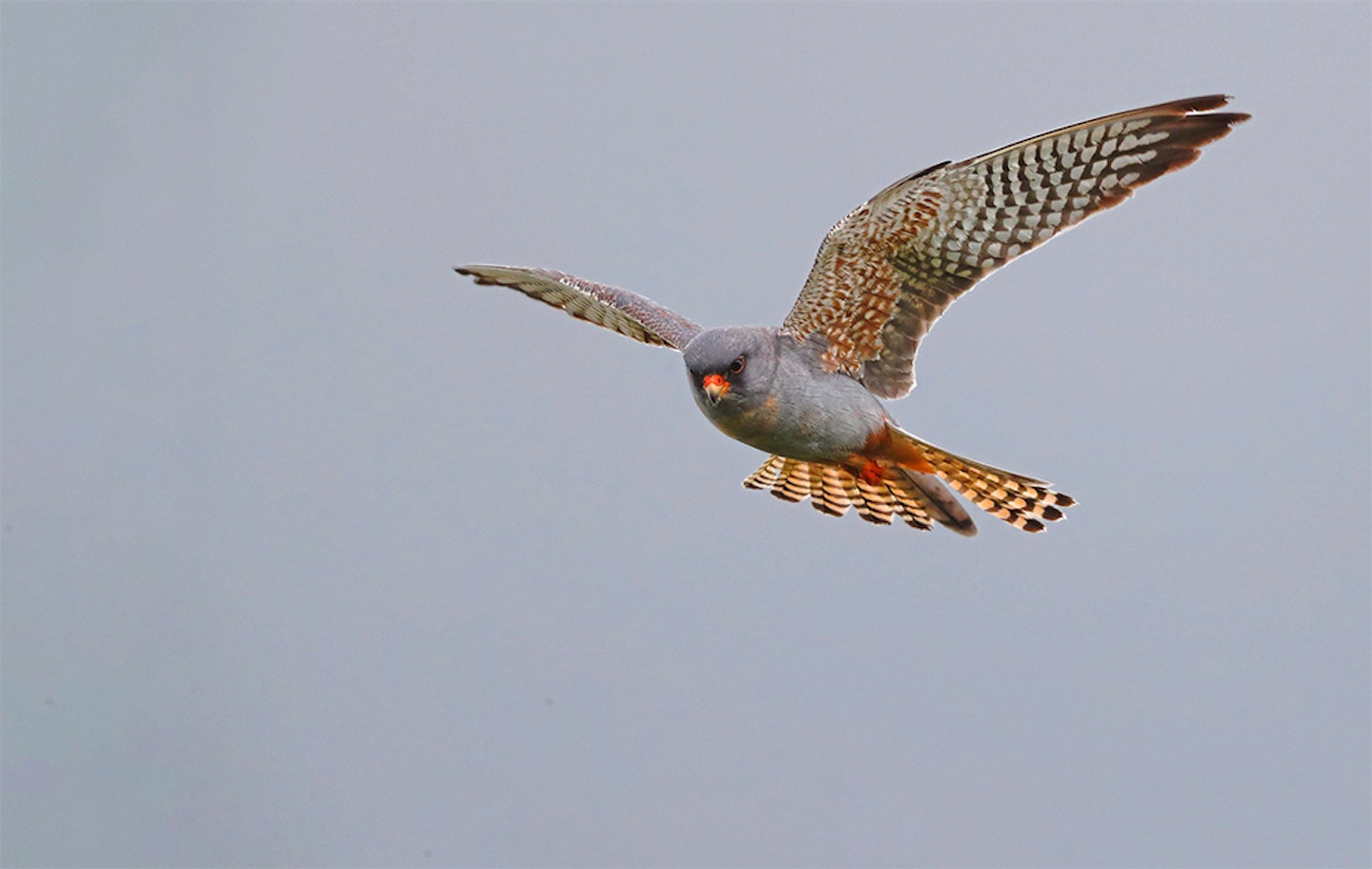Five birds to find in May
May is arguably peak birding time in the UK It is a time when many patch birders are unwilling to venture far from their local area for fear of missing the ‘big one’. Here are five birds which would be a great find on any ‘patch’, this month.
Red-footed Falcon

The Red-footed Falcon is a rare visitor from eastern and south-eastern Europe, which turns up in the UK in small numbers each summer. They are largely insect-eaters (and small bird-chasers) , like Hobbies, but will also hover like Kestrels, to catch four-legged creatures and large insects on the ground. Smaller than a Hobby, they are ‘intermediate’ in structure between a Kestrel and a Hobby, and come in a variety of distinct plumages depending on sex and age. First-summer males and females are perhaps the most likely to be seen, the former being largerly dark bue-grey with red ‘trousers’ and some barring on the underwing. Females have orange crowns, underwing coverts and bodies and grey backs and wings. They are often found in company of feeding Hobbies, or at least in habitat favoured by Hobbies, often near water.
Black Tern

This small graceful tern is a passage ‘marsh tern’ which does not breed in the UK, but passes through ‘on passage’ in April and May, often in small flocks. They are buoyant fliers, and by May, most will be in immaculate breeding plumage, with a dark grey (slightly darker on the head) body, paler grey wings and tail and whitish undertail covers. The bill, legs and feet are black. Black Terns often drop in at freshwater sites, particularly in showers, spending a while picking emerging insects from the water surface. One of the great delights of spring passage!
Cuckoo

Though not actually an uncommon bird (with 18,000 pairs across the country), the shy Cuckoo is a bird much more often heard than seen. Only the male produces the famous repeated ‘cuck-oo’ song (usually from high in a tree or on a telegraph wire, fence etc), while the female’s curious bubbling trill is said to be produced after an egg is laid! The sexes are fairly similar, being pale-meidum grey, dove-sized, slim birds with long rounded ended tails and long, pointed wings, which produce a rather flicky flight action (and are held below the body, with the tail raised, during the male’s song). A few females are of the ‘hepatic morph’, being a lovely rufous orange colour, and more barred with dark than other females. May is peak Cuckoo month, with some adults leaving the country before June is over.
Wood Warbler

Mostly a northern and western breeding bird in the UK (for instance, loving the western oak woods of Wales), the gorgeous Wood Warbler is a scarce passage visitor in the rest of the country. Wood Warblers are like extreme Willow Warblers, with longer wings, brighter green and yellow plumage (including a bright yellow supercilium and throat), whiter bellies and brighter orange legs. Like other leaf warblers, they are easiest to detect in song. This comes in two parts, the accelerating ‘silver sixpence’ rapid trill and a series of pew notes. Learn the song(s) before entering Wood Warbler woodland!
Bee-eater

In the last couple of years Bee-eaters have attempted to breed in north-east Norfolk, near Cromer. Perhaps this will continue this year. Otherwise they are rare (but regular) and highly desirable visitors, often in small flocks. They are, of course, unmistakable birds in a rainbow colours and with a very distinctive shape and flight profile. Perhaps the best way to find them is by hearing the distinctive ‘proop’ call of birds flying overhead. They are a dream patch find for many of us!
